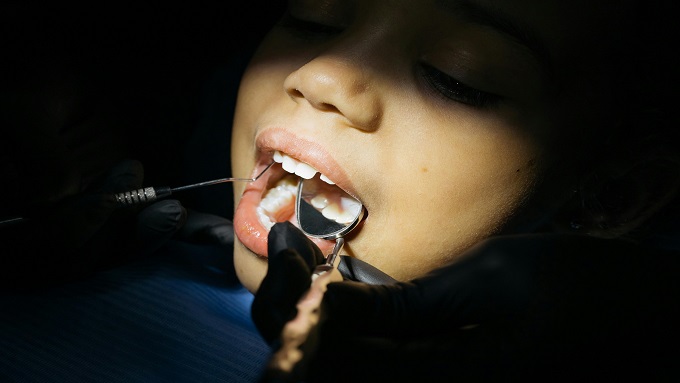HYPERBARIC OXYGEN THERAPY AS AN ADJUVANT TREATMENT IN HYDROCHLORIC ACID POISONING: A LITERATURE REVIEW

Downloads
Highlights
1. In Indonesia, 18.8% of all suicides were the result of chemical poisoning, such as using hydrochloric acid (HCl).
2. Hyperbaric Oxygen Therapy (HBOT) can be used as an emergency therapy for acute pathology or as a supplementary treatment for chronic illness.
Abstract
Background: Suicide is the second most common cause of death and is a major public health problem in many countries globally. Chemical poisoning, such as hydrochloric acid (HCl), accounted for 18.8% of the total suicide cases in Indonesia. Through ingestion, this acid chemical contributes as the most common cause of swallowing injuries that can adversely affect the gastrointestinal mucosal through various pathological processes, primarily through an excessive inflammatory process. On the other hand, hyperbaric oxygen therapy (HBOT) has been widely used as a non-pharmacological therapy in many diseases, although its mechanism for reducing inflammation in HCl poisoning has remained unclear. Objective: This study aimed to provide a better understanding on hyperbaric oxygen's biomolecular mechanism as a potential adjuvant therapy in HCl poisoning. Discussion: HCl poisoning causes an excessive inflammatory process, leading to tissue hypoxia indicated by increased expression of Hypoxia Inducible Factor 1 (HIF-1). Hyperbaric oxygen therapy decreases the expression of HIF-1 through activation of the HIF-1 hydroxylation pathway via prolyl hydroxylase (PDH) in the proline pathway and HIF inhibiting factor (FIH) in the asparagine pathway. Reactivating both pathways will decrease HIF-1 activity, eventually reducing the ongoing inflammatory process. In addition, HBOT also plays a role in wound healing by stimulating angiogenesis growth factors. Conclusion: Hyperbaric oxygen therapy has the potential to be used as adjuvant therapy in HCl poisoning due to its beneficial effects on reducing inflammatory mediators and wound healing.
Abdollahi, M. & Nikfar, S. 2014. Hydrochloric acid. Encyclopedia of Toxicology. Elsevier: 960–963. doi: 10.1016/B978-0-12-386454-3.00735-1.
Agency for Toxic Substances and disease registry. 2016. Medical management guidelines for hydrogen chloride.
André-Lévigne, D., Modarressi, A., Pepper, M., Pittet-Cuénod, B. 2017. Reactive oxygen species and NOX enzymes are emerging as key players in cutaneous wound repair. International Journal of Molecular Sciences, 18(10): 2149. doi: 10.3390/ijms18102149.
Arnold, M. & Numanoglu, A. 2017. Caustic ingestion in children”A review. Seminars in Pediatric Surgery, 26(2): 95–104. doi: 10.1053/j.sempedsurg.2017.02.002.
Caroline, C., Achmad, S. H., Taufik, R. 2021. Studi komparasi teknik menghilangkan kerak dalam toilet menggunakan asam sitrat dan pembersih toilet biasa. eProceedings of Applied Science, 7(4).
Choudhury, R. 2018. Hypoxia and hyperbaric oxygen therapy: a review. International Journal of General Medicine, 11: 431–442. doi: 10.2147/IJGM.S172460.
Gottfried, I., Schottlender, N., Ashery, U. 2021. Hyperbaric oxygen treatment from mechanisms to cognitive improvement. Biomolecules, 11(10): 1520. doi: 10.3390/biom11101520.
Hajhosseini, B., Kuehlmann, B.A., Bonham, C.A., Kamperman, K.J., Gurtner, G.C. 2020. Hyperbaric oxygen therapy: Descriptive review of the technology and current application in chronic wounds. Plastic and Reconstructive Surgery - Global Open, 8(9): 1–8. doi: 10.1097/GOX.0000000000003136.
Handaya, Y & Sunardi, M. 2017. Ileocolonic transposition esophagogastric bypass as an antireflux treatment for corrosive esophageal injury. Annals of Coloproctology, 33(4): 150–155. doi: 10.3393/ac.2017.33.4.150.
Huang, H.-H., Lee, Y., Chen, C.-Y. 2018. Effects of burns on gut motor and mucosa functions. Neuropeptides, 72: 47–57. doi: 10.1016/j.npep.2018.09.004.
Jain, K. 2017. Textbook of Hyperbaric Medicine. 6th edn. Springer.
Kirby, J. P., Snynder, J., Schuerer, J., Peters, J.S., Bochicchio, G.V. 2019. Essentials of hyperbaric oxygen therapy: 2019 review. Missouri medicine, 116(3): 176–179.
Manjhi, S., Buktar, S.B., Mukherjee, B.B., Farooqui, J.M. 2015. Suicidal death due to floor cleaning material: a case report. Pravara Medical Review, 7(1): 25–28.
Marsella, L., Calvisi, G., Feola, A., Serri, F., Archangeli, M. 2017. Suicide by ingestion of hydrochloric acid: A case report. Medico-Legal Updat, 17(2): 60–63.
Ministry of Health of the Republic of Indonesia. 2019. Pusat data dan informasi kementerian kesehatan RI : Situasi dan pencegahan bunuh diri. Jakarta.
National Center for Biotechnology Information. 2021. PubChem Compound Summary for CID 313, Hydrochloric acid.
Novak, S., Drenjancevic, R., Vukovic, R., Kellermayer, Z., Cosic, A., et al. 2016. Anti-inflammatory effects of hyperbaric oxygenation during DSS-induced colitis in BALB/c mice include changes in gene expression of HIF-1 α, proinflammatory cytokines, and antioxidative enzymes. Mediators Inflamm, 2016.
Ortega, M., Fraile-Martinez, O., Garcia-Montero, C., Callejon-Pelaez, E., Saez, M.A. 2021. A general overview on the hyperbaric oxygen therapy: Applications, mechanisms and translational opportunities. Medicina (Lithuania), 57(9): 1–25. doi: 10.3390/medicina57090864.
Sjöberg, F. & Singer, M. 2013. The medical use of oxygen: a time for critical reappraisal. Journal of Internal Medicine, 274(6): 505–528. doi: 10.1111/joim.12139.
Sunkari, V., Lind, F., Botusan, I.R., Kashif, A., Liu, Z.J., et al. 2015. Hyperbaric oxygen therapy activates hypoxia-inducible factor 1 (HIF-1), which contributes to improved wound healing in diabetic mice. Wound Repair and Regeneration, 23(1): 98–103. doi: 10.1111/wrr.12253.
Williams, F. N. & Lee, J. O. 2018. Chemical burns. in Total Burn Care. Elsevier: 408-413.e1. doi: 10.1016/B978-0-323-47661-4.00039-3.
de Wolde, S. D., Hulskes, R.H., Weenink, R.P., Hollmann, MW., Van Hulst, R.A. 2021. The effects of hyperbaric oxygenation on oxidative stress, inflammation and angiogenesis. Biomolecules, 11(8): 1210. doi: 10.3390/biom11081210.
Copyright (c) 2023 Desi Rahmah Sari, Ismi Dian Meiliana, Dewangga Satria Sakti Kinasih, Hamidah Kurniasari, Purwo Sri Rejeki

This work is licensed under a Creative Commons Attribution 4.0 International License.
1. The journal allows the author(s) to hold the copyright of the article without restrictions.
2. The journal allows the author(s) to retain publishing rights without restrictions.
3. The legal formal aspect of journal publication accessibility refers to Creative Commons Attribution 4.0 International License (CC-BY).
































